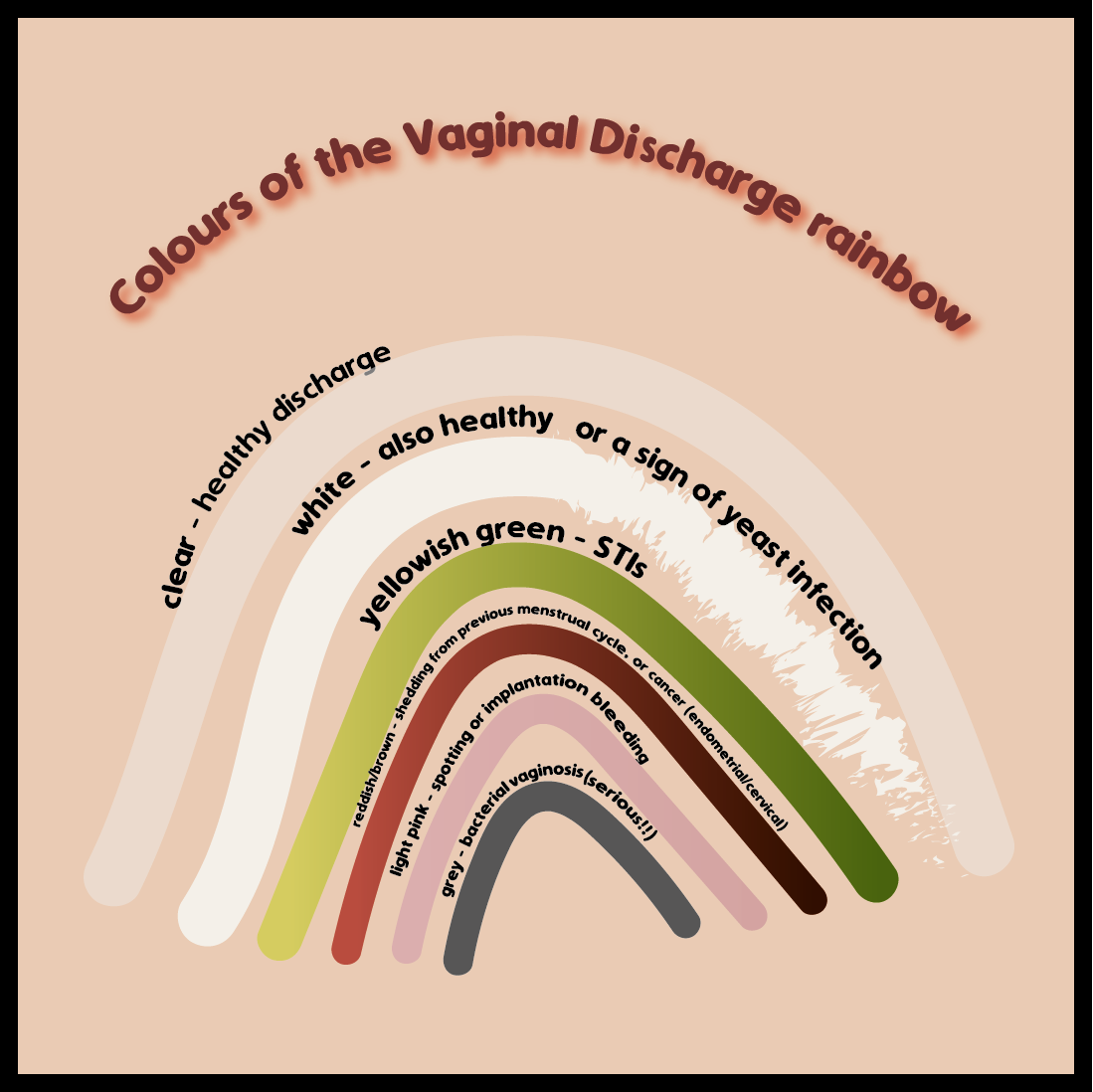The Many Colours of Vaginal Discharge — When Should You be Concerned?
Credits to shy.sg
Every woman has vaginal discharge. It is, after all, a naturally produced fluid made from the uterus, cervix and vagina. It all descends down into a common passage called the vaginal canal, and what we call discharge is meant to remove dead cells and bacteria within, preventing irritation and infection. Discharge will fluctuate depending on your activities, such as sexual arousal, exercise and emotional stress that increases discharge, while it decreases during certain periods of the menstrual cycle.
Sticky, translucent, or looking like cottage cheese — just like bodies, vaginal discharge also comes in all shapes, forms and colours. It is important that you know what your discharge is trying to tell you so that you can keep up with your sexual health!
Discharge during the menstrual cycle
Credits to owner
The Beginning of the Cycle (Day 1)
At this stage, cervix production of discharge will be minimal, so it is likely that you’d be drier than usual.
Early to Mid-Follicular Stage (Day 7)
Estrogen levels begin to rise, stimulating the cervix to produce mucus secretions. Hence, more fluids are being produced, and your discharge is sticky but translucent.
Mid to Late Follicular Stage (Day 9)
As more water and estrogen is produced, the discharge becomes thicker, and some even say that it looks cloudy.
Ovulation Stage (Day 14)
Since the body is preparing for fertilisation, discharge will be clear and stretchy (with the consistency of raw egg white) to assist the sperm in reaching the egg.
Luteal Phase (Day 17)
Between ovulation and your period, the uterine lining continues to thicken, and progesterone is the dominant hormone at this part of the cycle. This causes cervical fluid to reduce, making discharge thicker and stickier than before.
Also important to note, you may be more prone to getting STIs during the luteal phase. In preparing an ideal environment for pregnancy, the body lowers your immune system so that the egg can be fertilised and implanted in your uterus without the blockage from the immune system.
Discharge colours and their meanings
White
Credits to shy.sg
If you have no other symptoms, white discharge is most likely a sign of healthy lubrication.
Unfortunately, if your cottage-cheese looking white discharge comes with a side of itching, you most probably have a yeast infection. The vagina naturally has yeast in it, but it becomes infectious when its growth multiplies exponentially and uncontrollably. Yeast infections are usually triggered by stress, starting a dose of birth control pills and recent usage of antibiotics, in the last 1-3 months.
Reddish-brown
Credits to shy.sg
Dark red or brown discharge is normal especially at the end of your period cycle, since your body is shedding out the “old” blood.
Very rarely, brown or bloody discharge could hint at endometrial or cervical cancer, fibroids, or other abnormal growths. This is why it is good to go for yearly Pap smears so that the gynae can check for any cervical abnormalities.
Light red, pinkish
Credits to shy.sg
Between your periods, you may experience spotting, which is small amounts of bloody discharge. If you have had sex without protection recently, spotting happens during implantation so dpending on the stage of life you are in, this could either be cause for celebration or for the alarm bells to ring.
Discharge of this nature during the early phases of pregnancy could also be a sign of miscarriage, hence it would be good to have a follow-up with your gynae.
Yellowish-green
Credits to shy.sg
This specific shade of yellowish-green rightfully invokes feelings of disgust, grossness, and is of the same colour palette as the puking emoji 🤮. The same can be said if this is the colour of your discharge. By now, you would probably suspect that it is not normal at all, and indeed, it is a sign that you have the infection Trichomoniasis.
Commonly spread through (unprotected) sexual intercourse or sharing towels/bathing suits, trichomoniasis is caused by protozoan — a single-celled parasite. Other than the foul-smelling, greenish discharge, symptoms would include pain, inflammation, and itching around your vaginal region.
Grey
Credits to shy.sg
Grey discharge is another type of abnormality. This time, it is a symptom of Bacterial Vaginosis. Similarly, it develops after sexual intercourse with a new partner, and it is rare for someone to contract it without prior sexual intercourse.
How to keep your vagina clean
Credits to Atlas
The best way to remove any odours or clean up discharge is simply to wash with water or non-perfumed soaps. Douching (washing inside the vagina) is not recommended by many gynaecologists worldwide, since the soaps used could end up disrupting the delicate pH balance of the vagina, resulting in worsening bacterial overgrowth or infections.
Medically fact-checked by:
Dr Jessherin Sidhu
Medical Director and Founder of Insync Medical







